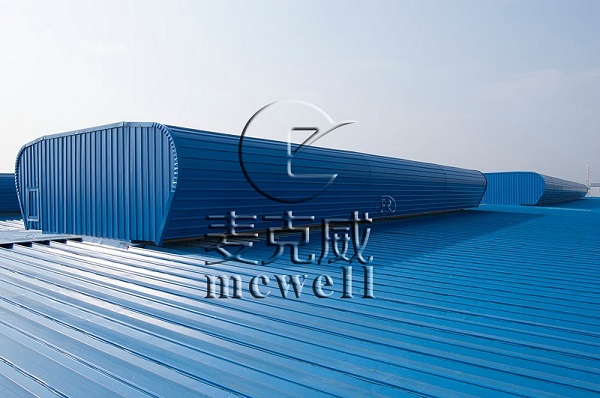- info@mcwell.cc
- +86 13881905158
- Quick Enquiry
Natural ventilator is one of the standard configurations of modern industrial plants, and it is a high-quality choice for ventilation and lighting in modern industrial plants. As we all know, the main function of natural vent in industrial plants is ventilation and exhaust. However, when choose ventilator, in addition to consider the ventilation and exhaust efficiency, they can also be used for wind, rain and snow protection. As a smoke vents manufacturer, Mcwell focuses on product quality and strengthens maintenance on the product performance, wind resistance, rain resistance, and snow resistance.
The first point is the choice of neutralization surface
The principle of plant ventilation design is to minimize the position of the neutralization surface, and make the operation area above the neutralization surface, so that most of the fresh air coming in from outside can flow through the operation area. Natural ventilator designed in this way can reduce the temperature in the working area and improve the air quality in the work area, and have a good ventilation and heat dissipation effect. In fact, whether it is a low-profile ventilator or a streamlined roof ridge vent, finding the neutral surface must be the top priority of the ventilator installation.
The second point is to avoid short intake air flow
When we use roof vents, we should try to avoid the phenomenon of short air flow. The so-called short intake air flow refers to the phenomenon that the fresh air entering the factory is exhausted from the skylight exhaust port before entering the workshop. The high side windows that we usually see are one of the major reasons for the short flow of intake air. Mcwell light-weight natural ventilator has small throats, so they may be slightly inferior to streamlined natural ventilators in terms of ventilation, and are more suitable for small and medium industrial plants.

The first point is the choice of neutralization surface
